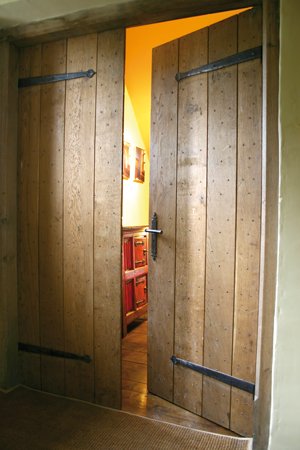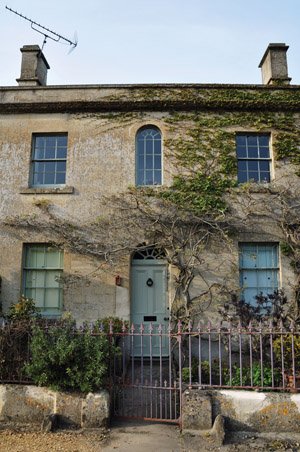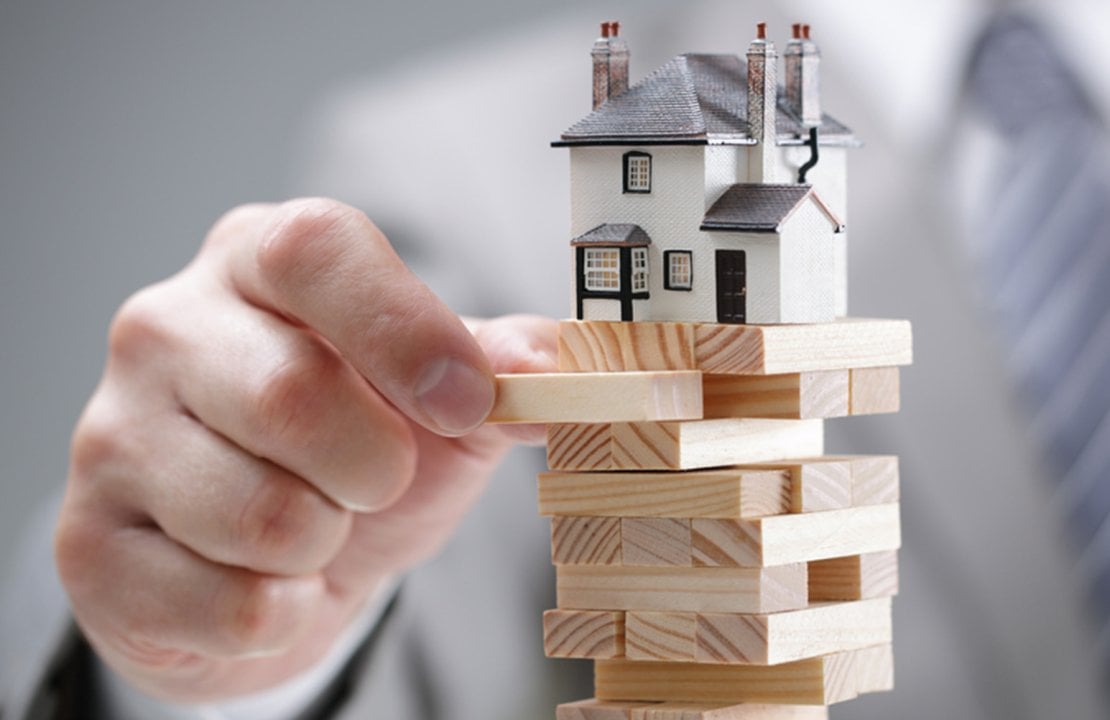Let’s start from the beginning - determining the current value of your Victorian house. If you live in a Victorian house, it should be easy to estimate the value of your house. Victorian houses tend to be in streets of similar houses so just looking on rightmove.co.uk, zoopla.co.uk etc will provide you with much information on houses that have been sold and the selling prices. You can also speak to an estate agent to obtain more specific information on this although don’t take just one person’s word for anything as estate agents valuations can vary considerably especially when it comes to properties that are unique in some way.
Look at the price ranges and descriptions of the houses – this will give you some idea of the price difference between a house that looks tired or needs modernisation, and a house tastefully renovated, and will not only indicate how to value your house but also what your maximum budget should be in order not to lose money on your period property renovation.

There are two main aspects of choosing between competing demands when adding value to your home. What will the surveyor like and show the house in a good light when it comes to any sort of homebuyer’s survey? And what will increase the desirability of your home to potential purchasers? Fulfilling both of these demands will add maximum value to your house or flat. Surveyors and purchasers have complementary, but not matching requirements. For example digging up an earth floor and replacing it with a proper, damp proof concrete floor will not wow a house hunter, but not making this improvement would indicate to the surveyor that the house renovations were not carried out to a particular standard. Conversely, sanding wooden floors may impress house hunters but will not make any difference to the surveyor’s valuation. My tip is when renovating a house, don’t ignore any underlying issues with the fabric of the house or they may come back to haunt you. For example not underpinning a house that needs it and instead spending an extra £5000 on a flashy kitchen.
Little increases the value of a period property more than restoring it to it’s original glory, but this should be in the context of the modern day. For example nobody wants to use a mangle and draw water from a well. It is especially easy with a Victorian house renovation as even if your original features have been stripped away, just visiting some local renovated properties that still contain their original features will provide plenty of inspiration (a sneaky way to do this is viewing houses for sale either in person or on property selling websites). Builders tended to build streets or areas of identical houses all with identical features, e.g coving, ceiling roses, doors, door handles, banisters, gates, so look to your neighbouring properties if lacking a clear idea of what your original features would have been.
Many of these original features are sold in the relevant section of our website.
Do consider whether it would be appropriate or desirable to extend your house. This is best thought about before you undertake the other work required as it may affect the layout of your house. The most common extension undertaken on a Victorian terraced house is an extension to the back of the house, where a bathroom was initially added, to make the kitchen into a large kitchen diner. This is a really good way to add value to your home and the planning permission is usually easy to obtain if you can see evidence that something similar has been done by your neighbours. This may result in you having to relocate your bathroom upstairs or within the extension. An extension is likely to be the largest job you do to your property and that requiring the largest chunk of money. Make sure that you would make this money back when reselling your property before deciding whether to go ahead with an extension.
What are the best ways to add value to your home?
Here are a number of aspects to check and if not found to be satisfactory, improve, in any home, and if done properly should maximise the value of a period home:
Exterior Home Improvements
- Roof – is it insulated, sound, does it have felt, are there any broken tiles?
- Walls – how is the mortar? If in bad condition, consider repointing which will smarten up the external appearance and help prevent water ingress which can destroy bricks and cost more at a later date. Repointing should be done using if possible lime mortar and not cement as cement will damage the brickwork. Lime allows the building to breathe.
- Windows – if frames are rotten, look to renovate or replace windows. Always replace like for like in style. Wooden sash windows can be double glazed and can be repaired, painted in different colours. Replacing wooden sash windows with UPVC lowers the value of the property and makes it ugly. If you like plastic windows, buy a modern house!
- Front door – this makes the all important first impression. If it looks scruffy, with chipped paint, sand and repaint. If it’s not fitting to the historical period of the house, replace.
- Garden - could the garden be improved?
- Gates and railings – have they been removed that could be reinstated and provide an attractive entranceway?

Interior Home Improvements
Obviously in the Victorian era, most houses did not have fitted kitchens, modern bathrooms, central heating radiators, decorative lighting etc although for today’s house owners these are a must. So when looking for inspiration about what is fitting to the era, you are best off visiting historic properties that were either built or refurbished in the Victorian era for a source of inspiration. The National Trust has some great examples, which make for interesting days out but should not be interpreted literally. There are also many reference books such as The Victorian Society Book of The Victorian House by Kit Wedd and The Victorian House Explained (England's Living History) by Trevor Yorke amongst others, which all contain useful photographs and are available from Amazon. My personal opinion is that Regency style fixtures and fittings fit well into Victorian houses so as long as the items you choose are Victorian or 100 years pre-Victorian in style, you won’t go too far wrong with your interior design. Don’t be a slave to the period - if you keep a predominantly period feel to the decorations you can add other elements which may not be strictly from the period e.g. 1920s light fittings would work.
- Colour scheme – Farrow and Ball’s paints are all historic colours and with this you may not wish to stick too faithfully to Victorian tastes. Paint colours chosen tended to be dark and gloomy shades of red, brown and maroon. You would probably want to lighten the shades somewhat but that doesn’t mean that you can’t choose an inspiring colour scheme if you choose from a historic colour palette.
- Flooring – floors tended to be tiles and wood downstairs and wood with rugs upstairs. Although carpets would not devalue the property, however they do cost more and are less practical than wooden flooring. To maximise the value, choose sanded floors with rugs (which you can take with you when you move).
- Cornicing and ceiling roses – if these have been removed, replace them and make sure these are used in any new parts of the house (especially later extensions) to tie the varying periods of the house together. The proportions of a Victorian room tend to be high ceilinged and rooms with original features stripped out tend to look incongruous. Therefore by reintroducing picture rail mouldings, dados, cornicing and decorating your room a lighter shade above the dado than below, your room will suddenly seem in proportion and not so tall. More often than not, wooden picture rails are used to add a decorative element to any home.
- Radiators – don’t get tempted by cheap radiators. Traditional radiators are back in vogue. If you choose a Victorian cast iron radiator, which is heat efficient, it becomes a focal point of your room and you will certainly make your money back if chosen wisely. A great way to add value to your house and worth the small investment!
- Furniture – there is an opportunity at the moment to purchase old furniture at a very low cost. For example an oak dining room chair could cost you as little as £20 which when cleaned would look like a proper antique and would have another 100 years worth of life in it. Compare this to the flat packed mass-produced furniture – a chair may last you 3 years if you are lucky and will look worse and worse as time goes on.
As a guide stick to the period any time from 200 years ago up to the 1930s to suit your house. Antique hunting is great fun. An interesting piece of furniture if cleaned up but retaining the patina of age set against a backdrop and contrast of a newly renovated room looks really great.
These are our top tips for how to add value to your period home. For more tips and advice from some of our customers, have a read of our article "Things I wish I'd known before buying my period house".If you need any further guidance and also need answers to questions like "What's the value of my house?", our Period Property Renovation Management Service can help.


Posted by Window Man - Dec 19, 2014 - 18:33
I love the use of old radiators in a home. It really is the focal point, I agree.